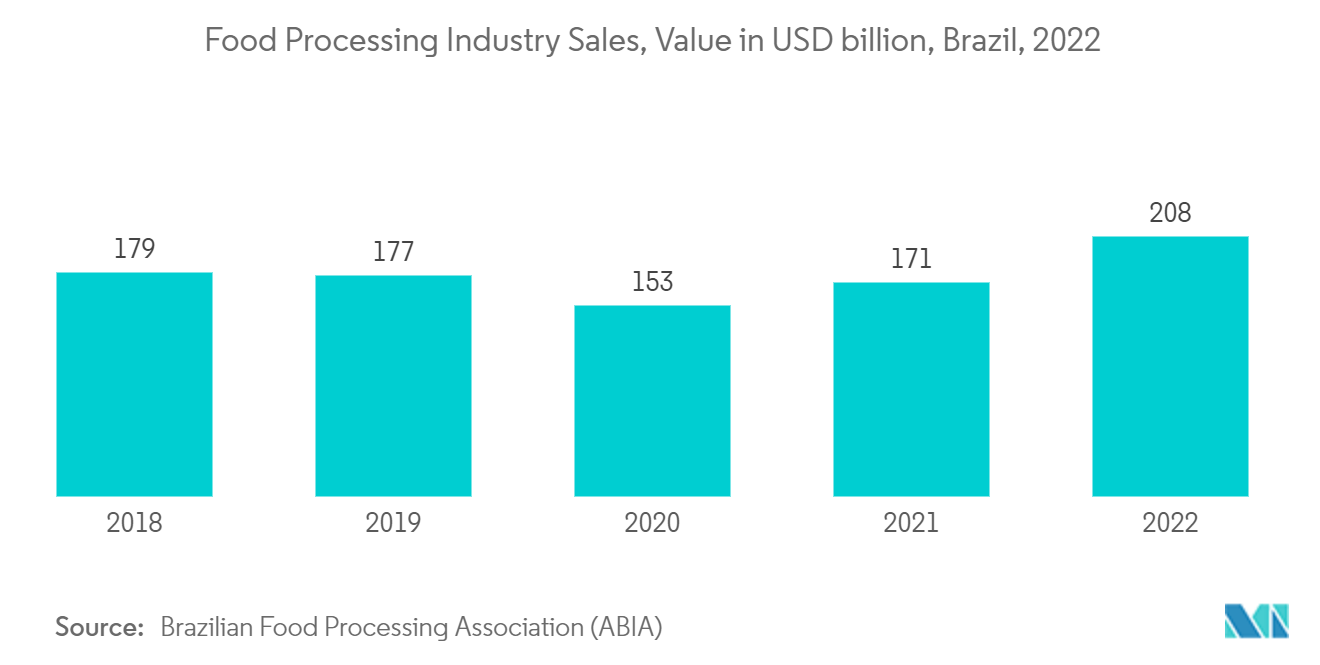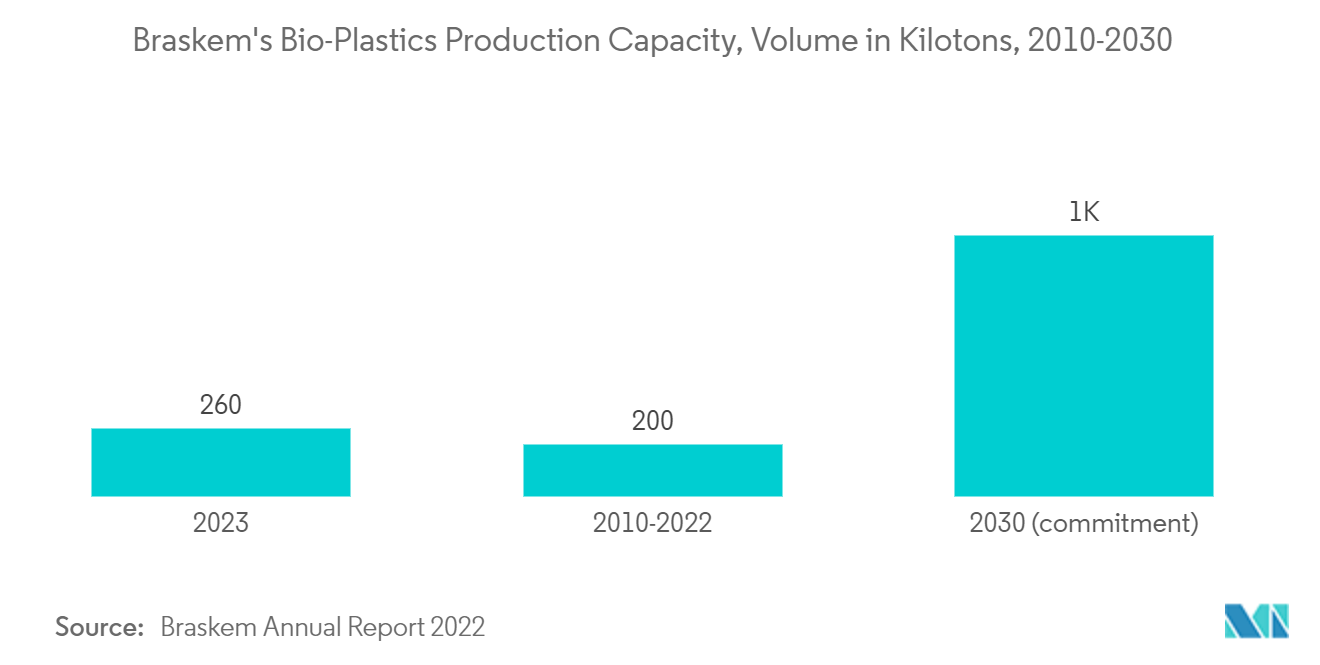Market Trends of Brazil Bioplastics Industry
Flexible Packaging Industry to Dominate the Market
- Bioplastics are used in flexible packaging, as they are not harmful to nature, and few are easily degradable as well.
- They are used in packaging films for food items, medicines, beverage bottles, packaging films, and packaging of non-food products, such as napkins and tissues, toilet paper, nappies, sanitary towels, cardboard, and coat paper for food wrapping paper, and coated cardboard to make cups and plates. Moreover, they are used in flexible and loose-fill packaging.
- The consumption of bioplastics is increasing in making plastic bags, as they are nature-friendly, and for organic waste collection bags, which are majorly used in hospitals, hotels and restaurants, commercial and retail outlets, and houses.
- Moreover, the food packaging and e-commerce industries have grown tremendously post the onset of COVID-19. The food and beverage industry of the country witnessed significant growth over the past few years. According to the Brazilian Food Industry Association (ABIA), the food industry accounted for 10.8% of the GDP in 2022.
- According to data from the Brazilian Food Processors' Association, Brazil's food processing sector achieved revenue of USD 208 billion in 2022, registering a year-on-year increase of 16.6%.
- The revenue generated from the food and beverage industry of the country is expected to reach around USD 416 million by 2024. Brazil is the second-largest exporter of processed foods in the world. The sector exports to more than 190 countries.
- As for e-commerce, online sales accounted for around 10% of all retail sales in 2022. This is over twice as much as compared to the share of sales before the pandemic. Although e-commerce had been gaining positive momentum in the Brazilian retail market before 2020, the pandemic has accelerated this trend.
- Brazil is amongst the fastest-growing countries in retail e-commerce sales, and 2023 sales are expected to drive beyond the USD 50 billion mark for the first time after consistent growth since 2020.
- With the food and beverage industry growing at a rapid pace and people adopting and preferring online shopping, starting from FMCG products, medicines, electronics, food, and others, the demand for flexible packaging in e-commerce is expected to offer several growth opportunities in the coming years.

Bio Polyethylene is amongst the Major Product Type in Brazil
- Bio-polyethylene (bio-PE) is a polymer produced from ethanol derived from sugarcane, which is a renewable raw material. It is one of the most popular bio-based plastic. However, unlike bio-PET, it is 100% bio-based. It is used for a wide variety of applications, including single-use bags, cosmetics, soap, and food packaging, as well as packaging films.
- Bio-PE is identical in structure to traditional PE; thus, it can be used in the same way. It is extremely versatile however is most often used in bottles, food packaging, and carrier bags. Bio-PE did not witness much demand, compared to other plastics, largely due to its high price compared to fossil-based PE.
- Bio-PE is not biodegradable. However, it can be recycled within the same chain of recycling fossil-fuel-based polyethylene.
- Bio-PE can be available in the market in different forms, such as high-density polyethylene and linear low-density polyethylene. These high and low-density polyethylene are made by the polyethylene polymerization process of the bio-ethylene monomer.
- Bio-PE can also be used in both rigid and flexible packaging. The different applications of bio-PE include rigid packaging (as bottles and bottle caps), cosmetics and personal care, automotive and transport, agriculture and horticulture, and consumer goods, such as toys.
- Bio-PE was first commercialized by the Brazilian company, Braskem, utilizing local sugarcane-derived ethanol/ethylene as feedstock. In September 2010, Braskem started the commercial production of bio-based HDPE with a capacity of 200 kilotons per year. It is provided under the trademark 'I'm green.'
- In July 2023, Braskem announced that it concluded a 30% increase in the production capacity of its bio-based ethylene plant, located in the Petrochemical Complex of Triunfo, Rio Grande do Sul, Brazil. The USD 87 million investment in the facility was to meet the growing global demand for bio PE. The plant capacity has now increased from 200 kilotons to 260 kilotons yearly.
- Companies such as Procter & Gamble use sugarcane-based high-density polyethylene and HDPE (made by Braskem) in some of their products, such as the Pantene, Covergirl, and MaxFactor brands.
- Therefore, the demand for bio-PE in various applications is expected to increase during the forecast period.


